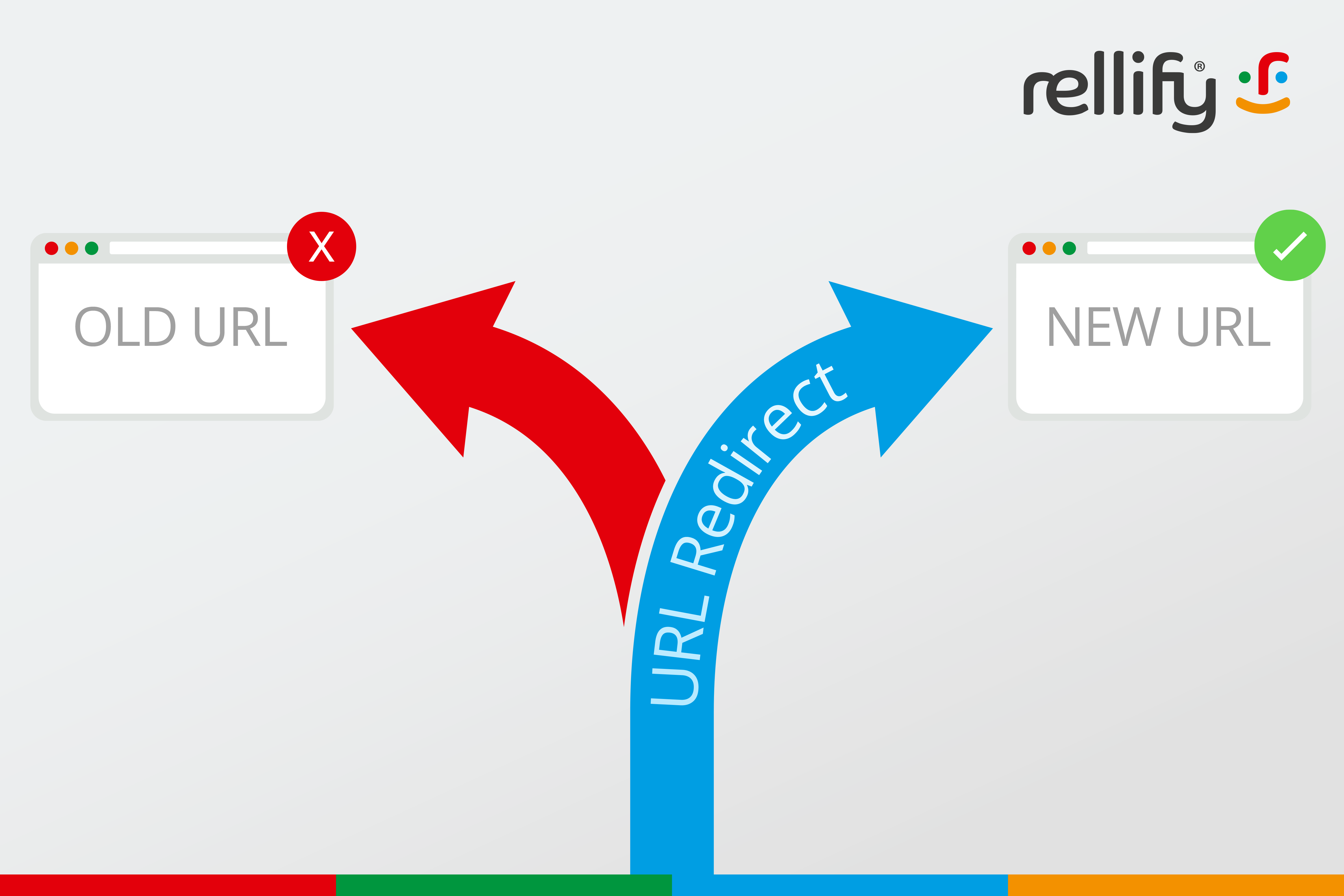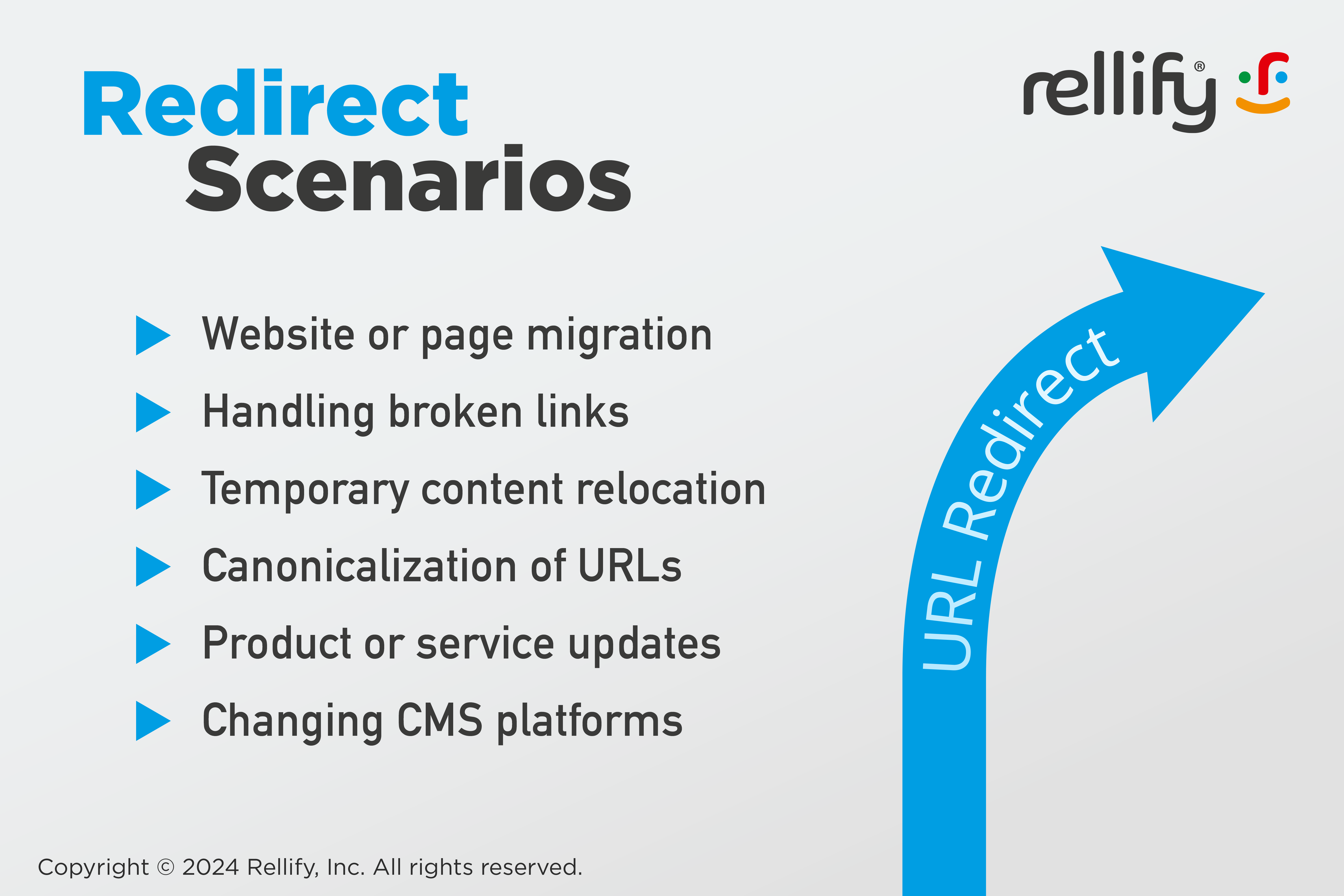Understanding URL Redirects: A Comprehensive Guide
Last Updated on
May 31, 2024
Published:
February 1, 2024

By Dan Duke - This is the third part in our 4-part series on URLs and their relationship with search engine optimization. In this section, we’ll look at URL redirects — an important tool for maintaining the quality of a website and implementing an SEO strategy.
Part One: Unlocking the Power of URLs in SEO
Part Two: Creating SEO-Friendly URL Structures
Part Three: Understanding and Implementing URL Redirects
Part Four: Troubleshooting Common URL Issues
If you've ever clicked on a link and, to your surprise, it takes you to a different page than you were expecting, then you've experienced a URL redirect at work. But why do they exist and what exactly is their role in SEO? Let's take a look at this type of URL function and how to use it most effectively.
Defining URL redirects
URL redirects send both users and search engines to a different URL than the one they originally sought.
The primary purpose of a URL redirect is to connect one URL with another. This means that when anyone types in or clicks on the original URL (or a link leading to it), they are automatically taken to a different URL in their web browser.
There are several uses for and benefits from URL redirects. For example, with a site migration, you want to keep all the existing traction and site traffic you have. Redirects help you to maintain that traffic by sending readers to useful, relevant content. But we'll get into all the reasons you might need a URL redirect below.
What are the different kinds of URL redirects?
Let's look at the five most common types of URL redirects and their functions.
- 301 redirect. Known as a permanent redirect, it passes between 90-99% of link equity (ranking power) to the redirected page from the original. It's used when a page has been moved permanently.
- 302 redirect. This is a temporary redirect and does not pass on link equity. It's used when a page is temporarily moved or when you want to test a new page for user feedback but don’t intend to make the move permanent.
- 307 redirect. Similar to a 302, it's also used for temporary redirection. The key difference is that it ensures that the method of the original request is reused in the new request.
- 308 redirect. This is a permanent redirect similar to a 301, but maintains the method of the original request in the new request.
- Meta refresh. This is a type of redirect executed on the page level rather than the server level. Meta refreshes are slower and not recommended for SEO purposes.
Importance of URL redirects
Correct and strategic use of redirects is a key tool for search engine optimization. Incorrect implementation can lead to traffic loss, because search engines might not properly index the new page. This list isn't exhaustive, but it shows some of the more common situations that require URL redirects:

- Website or page migration. When moving a site to a new domain or changing the URL structure, redirects make sure users and search engines are directed to the correct pages. In case of merging two websites or domains, redirects are used to guide visitors from the old URLs to the appropriate content on the new combined site.
- Handling broken links. To prevent a poor user experience or a negative SEO impact from broken links, redirects can be used to lead users from outdated or non-existent URLs to relevant, active pages.
- Temporary content relocation. Redirects are useful for temporary situations, like website maintenance or A/B testing, where the original content needs to be temporarily moved or replaced.
- Canonicalization of URLs. When multiple URLs lead to the same content (e.g., due to www and non-www versions, or http and https versions), redirects can be used to guide all traffic to a single, canonical URL.
- Product or service updates. If a product or service is discontinued or updated, redirects can guide users from old product pages to the newest versions or related products. It can also help transition between marketing campaigns.
- Changing CMS platforms. When moving a website from one content management system to another, bringing a structural URL change, redirects would be necessary.
How to create a URL redirect
Identify the URL to redirect
Determine the old URL you want to redirect from and the new URL you want to redirect to.
Choose the type of redirect
Decide whether you need a 301 (permanent) or 302 (temporary) redirect based on the purpose of the redirect.
Access your web server or hosting control panel
- For Apache servers, access the .htaccess file.
- For Nginx servers, access the server configuration file.
- If you're using a content management system (CMS) like WordPress, access the redirect functionality (often available through plugins).
Write the redirect rule
For .htaccess on Apache:
Redirect 301 /old-url http://www.yourdomain.com/new-url
For Nginx:server { ... rewrite ^/old-url$ http://www.yourdomain.com/new-url permanent; ... }
For a CMS like WordPress, use the plugin interface to set the old and new URLs.
Test the redirect
After implementing the redirect, test it by visiting the old URL to make sure it correctly redirects to the new URL.
Monitor for errors
Check for broken links or redirect loops, and monitor your website's traffic and search engine rankings to see if the redirect is functioning as intended.
Impact of URL redirects on SEO
URL redirects significantly impact technical SEO. They influence how search engines index and pass link equity (also known as "link juice") to pages. A well-implemented 301 redirect effectively transfers the majority of the ranking power to the new URL, preserving the SEO value of the original page.
URL Redirect Best Practices
Avoid redirect chains
Try to avoid long chains of redirects (where one redirected URL leads to another, etc.). These can slow down page load times and dilute SEO value. Instead, aim to redirect directly from the original URL to the final destination.
Limit the use of redirects
While redirects are useful, if you use them excessively, it'll slow down your site and create complexity. Use them only when necessary.
Also, you should only use 302 redirects for temporary needs. Remember that these don't pass on as much SEO value as 301 redirects. Using them improperly can lead to SEO issues such as diluted link equity and confusion for search engine crawlers.
Regularly check and update redirects
Over time, some redirects may become obsolete or broken. Regular audits of your redirects can help identify and fix such issues, and make sure they remain effective and relevant.
Avoid redirect loops
Don't let your redirects inadvertently create loops. This is when a URL redirects back to itself, either directly or through a series of redirects. This can create accessibility and navigation issues for both users and search engines.
Update internal links
When you implement a redirect from an old page to a new one, update internal links throughout your site that point to the old page. This improves load times and user experience.
Communicate with search engines
When you move your site or make significant changes, inform search engines through tools like Google Search Console. This can help speed up the reindexing process.
Use canonical tags appropriately
Alongside redirects, use canonical tags to signal to search engines which version of a URL you want to appear in search results, especially if duplicate content issues are present.
Document your redirects
Keep a record of all redirects, including their purpose and implementation date. This documentation can be invaluable for troubleshooting and maintaining your site's architecture.
Use URLs to boost your SEO power
The power of URLs in the realm of SEO is often underestimated. URLs are far more than mere web addresses — they're critical tools in:
- Structuring a site
- Enhanging user experience
- Guiding search engine indexing
- Bolstering page authority
Ready to keep learning about how to strategically craft and implement URLs on your site? In the final installment of our four-part series, we'll cover how to troubleshoot common SEO issues like broken links and duplicate content.




